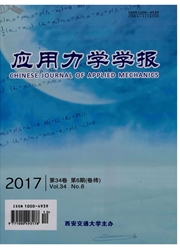

 中文摘要:
中文摘要:
在钻的深水期间理解环形的多相的流动行为和水合物阶段转变的效果是很重要的。基本水动力学当模特儿,包括质量,动量,和精力保存方程,在气体期间与煤气的水合物阶段转变为环形的流动被建立踢。有水合物阶段转变的环形的多相的流动的行为被分析形成水合物的区域,在流动在体环的液体的煤气的部分,坑获得,底部洞压力,和被关在屋内的人 casing 压力调查。模拟证明由增加发行量率移动形成水合物的区域离开海地板是可能的。在在体环的煤气的体积部分的减少由于水合物形成减少坑获得,它能推迟察觉很好踢并且增加水合物为线插上电源的风险。当一口井为气体被监视时,小心被需要以相对低的煤气的生产率踢,因为水合物存在的可能性以相对高的生产率比那大得多。被关在屋内的人 casing 压力不能反映气体由于水合物形成踢,它与时间增加。
 英文摘要:
英文摘要:
It is very important to understand the annular multiphase flow behavior and the effect of hydrate phase transition during deep water drilling. The basic hydrodynamic models, including mass, momentum, and energy conservation equations, were established for annular flow with gas hydrate phase transition during gas kick. The behavior of annular multiphase flow with hydrate phase transition was investigated by analyzing the hydrate-forming region, the gas fraction in the fluid flowing in the annulus, pit gain, bottom hole pressure, and shut-in casing pressure. The simulation shows that it is possible to move the hydrate-forming region away from sea floor by increasing the circulation rate. The decrease in gas volume fraction in the annulus due to hydrate formation reduces pit gain, which can delay the detection of well kick and increase the risk of hydrate plugging in lines. Caution is needed when a well is monitored for gas kick at a relatively low gas production rate, because the possibility of hydrate presence is much greater than that at a relatively high production rate. The shut-in casing pressure cannot reflect the gas kick due to hydrate formation, which increases with time.
 同期刊论文项目
同期刊论文项目
 同项目期刊论文
同项目期刊论文
 期刊信息
期刊信息
